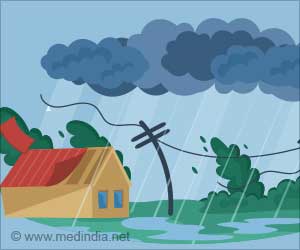The first ozone measurement taken on the summit of Mount Everest has revealed surprisingly high levels of ozone, which scientists involved in the expedition suggest might have originated
Scientists have taken the first ozone measurement on the summit of Mount Everest and have found surprisingly high levels of ozone, which might have originated from urban pollution.
According to a report in Nature News, the measurement was made by British climber Ian Wade, part of the Karrimor 2005 Everest Expedition, who carried an ozone meter the size of a pack of cards to the mountain's peak, more than 8,800 meters above sea level.John Semple from the University of Toronto, Canada, who was team doctor for the expedition, said that Wade had to memorize the measurement.
Semple and his Toronto colleague, atmospheric physicist Kent Moore, have now analyzed this and other ozone data taken during the expedition.
Wade's measurement, taken on 30 May 2005, found an ozone level of 50 parts per billion.
Using meteorological records of atmospheric circulation patterns in the region, Moore traced the origin of the ozone back to southeast Asia, where urban areas are plagued by ozone-rich photochemical smog.
"It is likely that the elevated ozone observed at the summit was associated with this phenomenon," said the authors. "We were quite surprised. You tend to think of the Himalayas as pristine," he added.
Advertisement
The authors said that this ozone came directly from the stratosphere - the ozone-rich layer of the atmosphere that sits on top of the troposphere and protects us from harmful ultraviolet radiation.
This event sees the boundary between the troposphere and the stratosphere - the tropopause, which normally lies between 8 and 18 kilometres in height - fold downwards, bringing it closer to Earth's surface.
It can often follow a cold front, and in the climbing season at Everest these events can happen up to once a week, according to Moore.
Semple's Camp V measurements also saw regular variation in ozone levels from day to night - evidence that glacier winds, triggered by changing surface temperatures in daylight and darkness, bring ozone down the mountain.
"When at extreme altitude, you're breathing extremely hard, taking in a lot of ozone and it is extremely toxic to the lungs," said Semple.
If tropopause folds can be predicted, it could warm climbers that a summit attempt could incur lung damage or breathing problems.
Source-ANI
RAS/L









